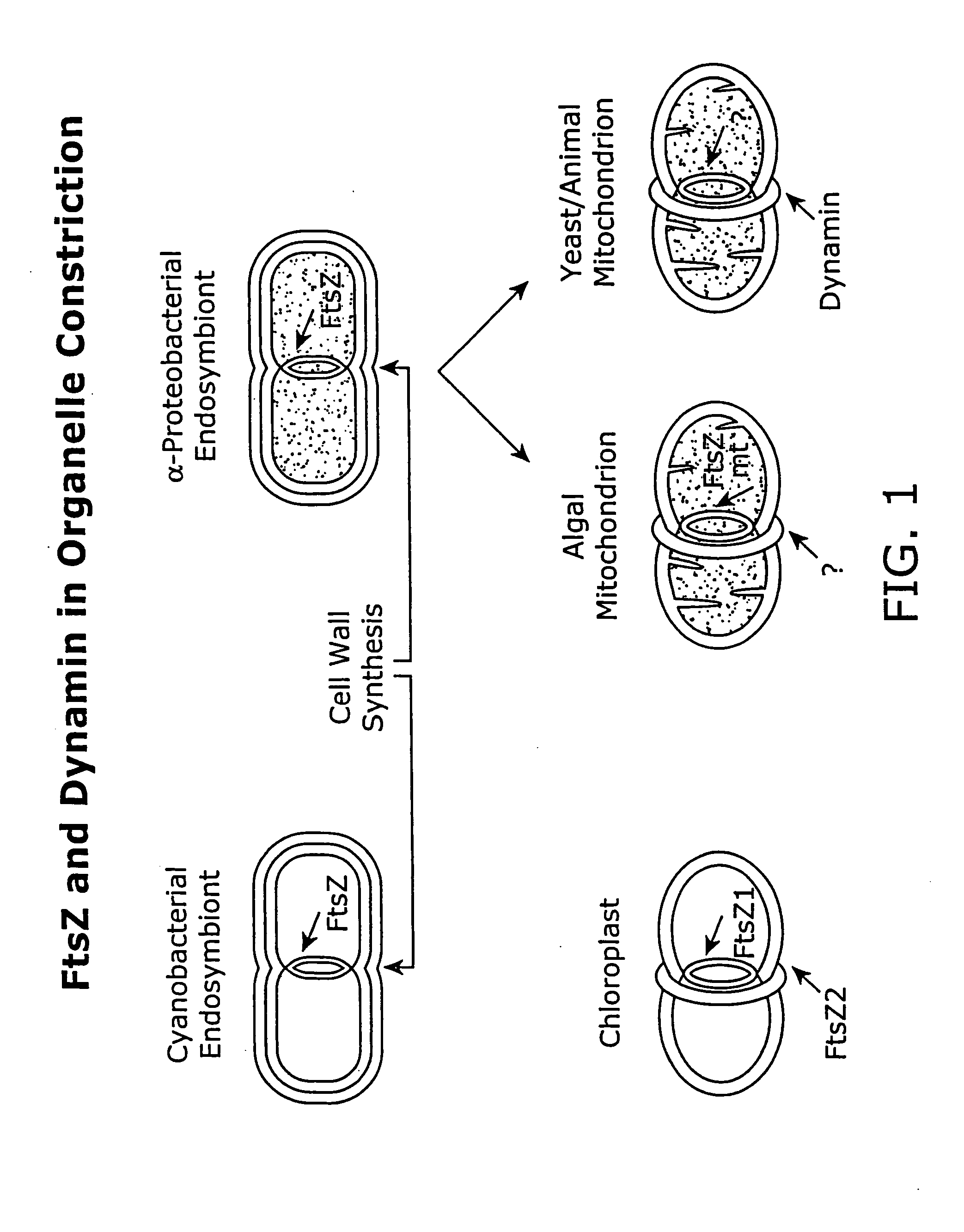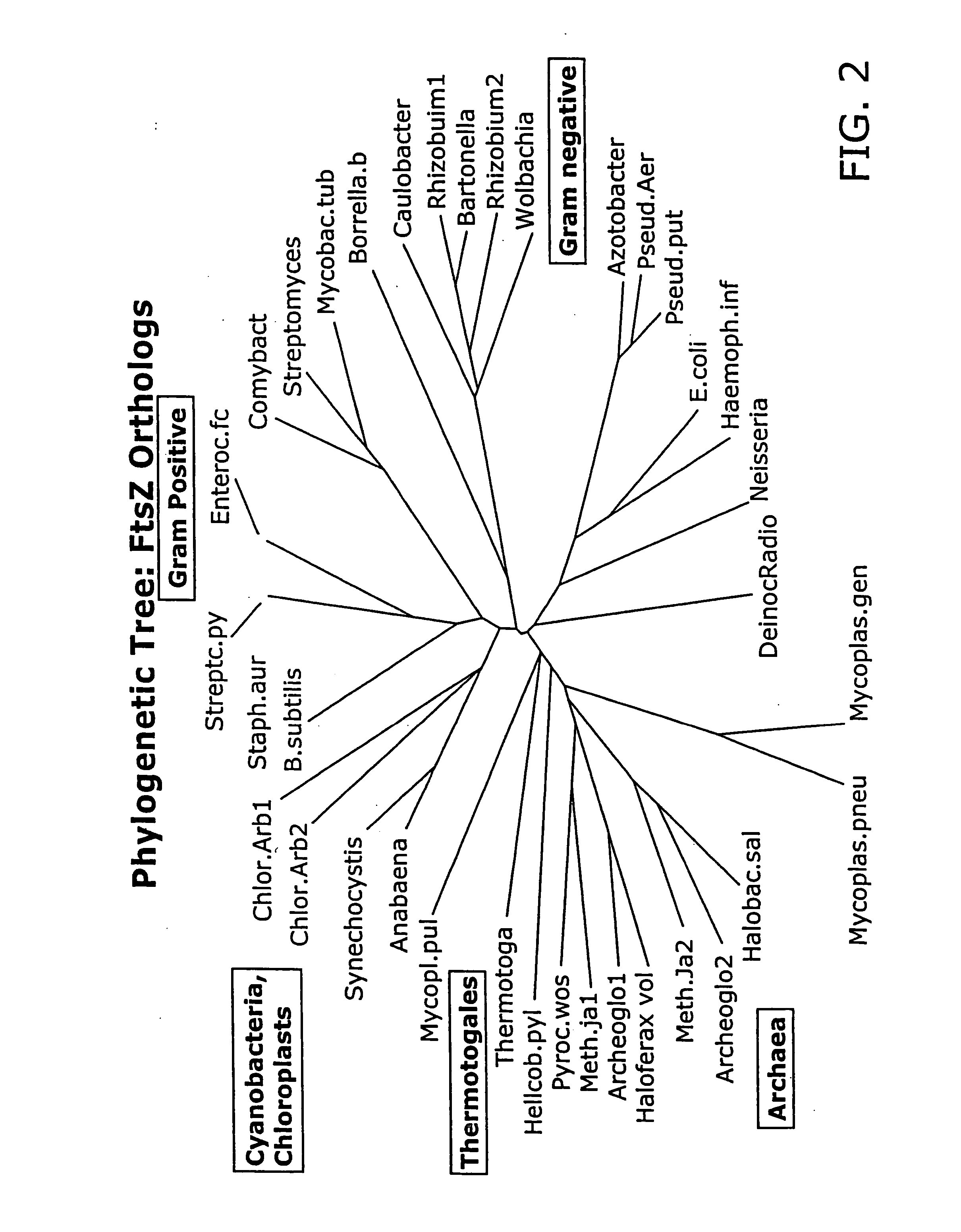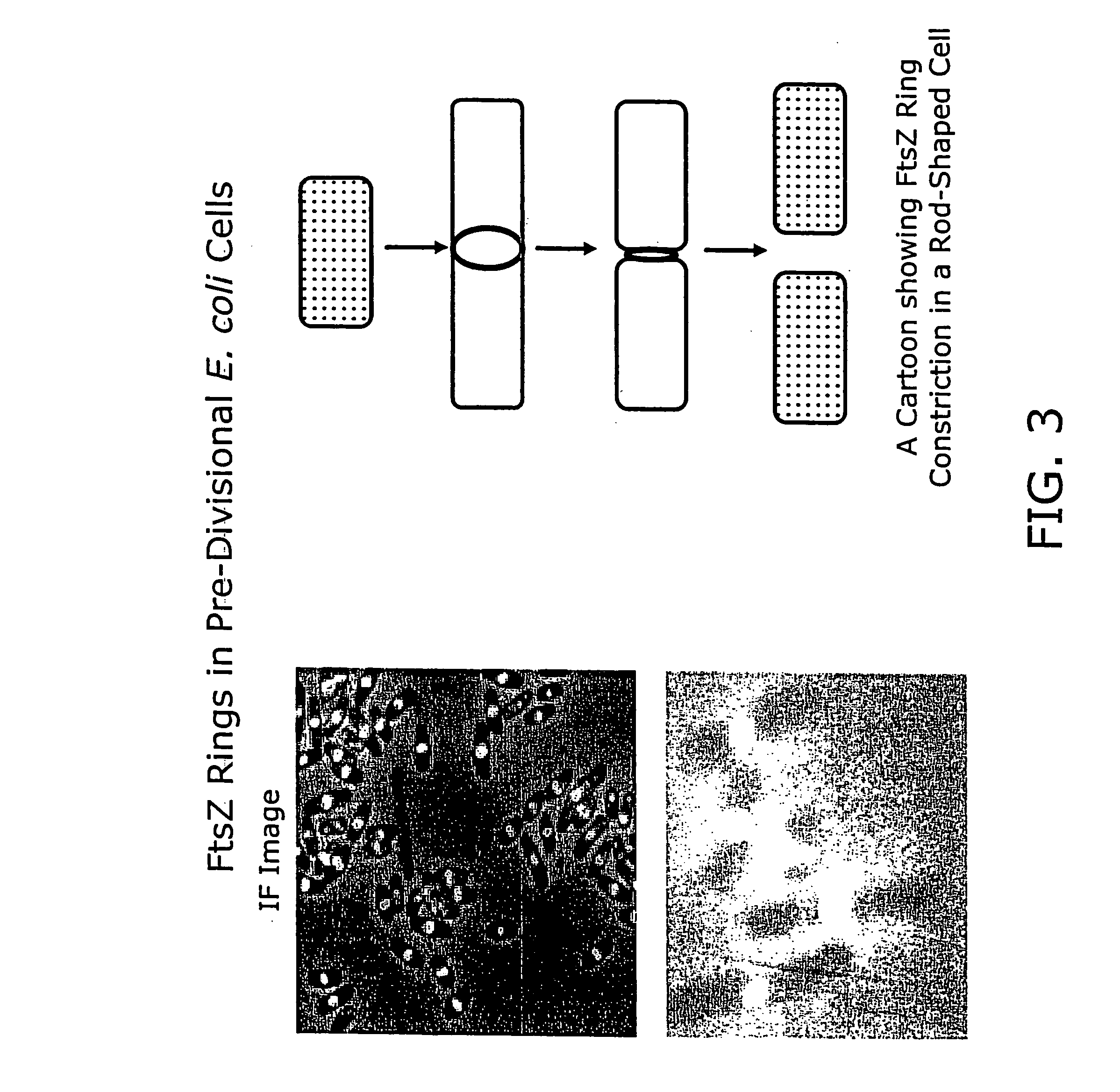Compound combinations for inhibiting cell division and methods for their identification and use
a cell division and compound combination technology, applied in the field of antimicrobial agents, can solve the problems of increasing treatment costs, increasing morbidity and mortality, and long patient hospitalization, and achieves the effects of reducing treatment costs, reducing morbidity and mortality, and reducing treatment costs
- Summary
- Abstract
- Description
- Claims
- Application Information
AI Technical Summary
Benefits of technology
Problems solved by technology
Method used
Image
Examples
example 1
In Vivo Assay for FtsZ Inhibitors or Activators
Materials and Methods
[0173] Differential in vivo screens were carried out at 30° C. by looking for greater than or equal to 45% growth inhibition and phenotypic aberrations (e.g., changes in filamentation or cell shape (e.g., rod to sphere) or minicell formation) in the E. coli DRC39 strain, which is deleted for the multidrug efflux pump AcrAB, and its congenic ftsZ84 variant DRC40. Libraries were screened with two different concentrations of compound using 40- and 200 nl pin transfer devices.
[0174] Bacterial cultures were grown overnight at 30° C. in 0.5% NaCl Luria Broth (LB) with 20 μg / ml kanamycin and diluted 1:1000 (OD600 of 0.005) in fresh 0.5% NaCl LB. The Labsystems 384-well liquid dispenser was used to dispense 40 μl of the diluted culture to the first 23 columns of a clear NUNC 384-well plate, leaving one column empty for manual addition of the blank samples. 200 nl or 40 nl of compounds were transferred from a 384-well li...
example 2
In Vitro Assays and Effect of an Inhibitor Identified In Vitro on FtsZ In Vivo
[0183] This example describes various in vitro assays that were used to identify FtsZ GTPase inhibitors in a primary screen (NADH assay) and to verify preferred inhibitors in secondary assays (charcoal-based assay, TLC assay). FIG. 22 is a chart showing the overall in vitro screening process that was used to identify 5 inhibitors of FtsZ GTPase activity and results obtained. The example further describes the in vivo effects of one inhibitor identified in vitro.
NADH Assay
[0184] An enzyme-coupled assay for assembly-dependent FtsZ GTPase activity was developed and utilized to screen two compound libraries, as described below and shown in FIG. 24. According to the assay, purified FtsZ protein is combined in a reaction vessel with the enzymes pyruvate kinase and lactate dehydrogenase, and the substrates GTP, PEP, and NADH. Upon reaction with GTP, FtsZ yields the products GDP and phosphate, providing a subst...
example 3
In Vitro and In Vivo Analysis of Compound 26E-10
[0192] Below are shown the MIC values of 26E-10, which causes filamentation in both DRC39 and DRC40 but has no evident effect on FtsZ GTPase activity in vitro, for various bacterial species.
TABLE 3MIC values for 26E−10 against different bacterial species and strains.OrganismMIC (μM)E. coli MC1000 (wild-type)>40 E. coli DRC39 (ΔacrAB::kan) 10 (filaments)E. coli DRC40 (DRC39 ftsZ84)2.5* (filaments)E. coli DRC42 (DRC39 recA::cat)10Vibrio cholerae40Bacillus subtilis40Staphylococcus aureus20Clostridium perfringens >80 (filaments)
*This concentration results in a culture with slight turbidity. However, this is believed to represent unlysed filaments rather than bacterial growth.
[0193] As also occurred in the case of the in vitro FtsZ inhibitors, 26E-10 permeates E. coli cells significantly better in the absence of the AcrAB pump. Consistent with the in vivo assay, the ftsZ84 mutant is significantly more sensitive to 26E-10 compared to th...
PUM
 Login to View More
Login to View More Abstract
Description
Claims
Application Information
 Login to View More
Login to View More - R&D
- Intellectual Property
- Life Sciences
- Materials
- Tech Scout
- Unparalleled Data Quality
- Higher Quality Content
- 60% Fewer Hallucinations
Browse by: Latest US Patents, China's latest patents, Technical Efficacy Thesaurus, Application Domain, Technology Topic, Popular Technical Reports.
© 2025 PatSnap. All rights reserved.Legal|Privacy policy|Modern Slavery Act Transparency Statement|Sitemap|About US| Contact US: help@patsnap.com



